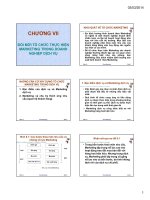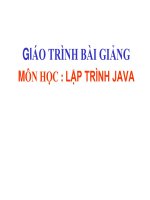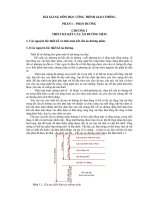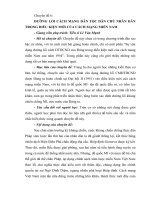Bài giảng cao học quá trình trao đổi chất và năng lượng ở vi sinh vật
Bạn đang xem bản rút gọn của tài liệu. Xem và tải ngay bản đầy đủ của tài liệu tại đây (2.86 MB, 79 trang )
TRAO ĐỔI CHẤT Ở VI SINH VẬT
1. Khái niệm
Oxidation-Reduction
Figure 5.9
Oxidation-Reduction Reactions
• In biological systems, the electrons are often
associated with hydrogen atoms. Biological
oxidations are often dehydrogenations.
Representative Biological Oxidation
Figure 5.10
The Generation of ATP
• ATP is generated by the phosphorylation of
ADP
Substrate-Level Phosphorylation
• Energy from the transfer of a high-energy
PO4– to ADP generates ATP
2. Trao đổi Carbohydrates (Carbohydrate
Catabolism)
• The breakdown of carbohydrates to release
energy
– Glycolysis
– Krebs cycle
– Electron transport chain
Glycolysis
• Dị Hóa:
The oxidation of glucose to pyruvic acid
produces ATP and NADH
Preparatory Stage of Glycolysis
• 2 ATP are used
• Glucose is split to form 2 glucose-3-phosphate
Figure 5.12, steps 1–5
Energy-Conserving Stage of Glycolysis
• 2 glucose-3-phosphate oxidized to 2 pyruvic acid
• 4 ATP produced
• 2 NADH produced
Figure 5.12, steps 6–10
Glycolysis
• Glucose + 2 ATP + 2 ADP + 2 PO4– + 2 NAD+ → 2
pyruvic acid + 4 ATP + 2 NADH + 2H+
Intermediate Step
• Pyruvic acid (from glycolysis) is oxidized and
decarboyxlated
Figure 5.13
The Krebs Cycle
• Oxidation of acetyl CoA produces NADH and
FADH2









